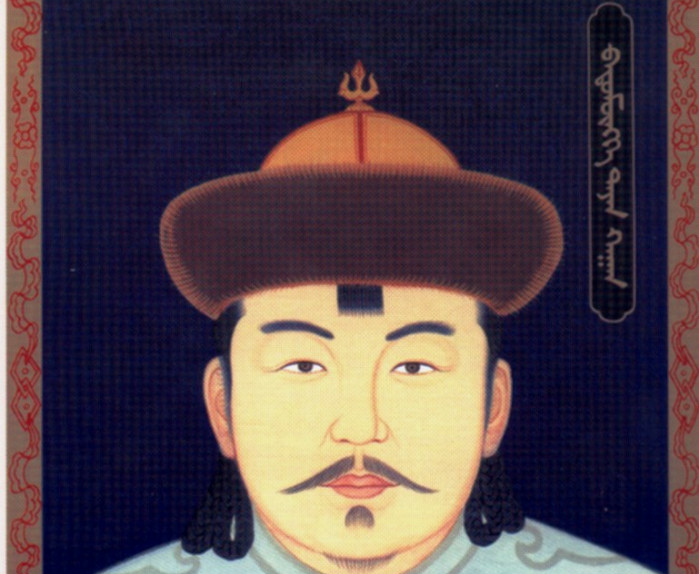Dayan Khan’s youngest son Gersenzed assumed command of the central heartland of Mongolia, which to is called Halh. After his death, his widow divided Mongolia among her seven sons, which brought about the so-called doloon Halh hoshuu (referred to in historical literature as “seven halh bunners”). A hoshuu is a territorial division, sometimes translated “banners”; these divisions became geo-political during the 20th century. The whole of Halh, like greater Mongolia, was also divided into the right and left wings, the right being under the control of Dayan Khan’s eldest son Ashihai and the left under his third son Noonoh. Noonoh’s son Avtai received the title of Khan from the Tibetan Dalai Lama and proclaimed himself Tusheet Khan.
At the moment, Sholoi, the grandson of Gersenzed’s first son Amindural, decided to show he was no inferior and bestowed upon himself the title of Setsen khan. Ashli’s son Luihar was also a proud man and he appropriated the title of Khan, which soon expanded into that of Zasagt Khan. Thus Halh was blessed with three Khans who emerged nearly all at once. All of these together made up Eastern Mongolia or zurgaan tumen.
Rivalry Between Halh and Oirat
An Oirad prince by the name of Monhtomor died in 1393, leaving behind his three sons Mahmud, Taichin, and Batbold. These sons, of Oirad heritage, did not want to follow the Grand Khan Elbeg, a descendant of Kublai Khan. Upon the death of Elbeg, the three sons declared the end of the sovereignty of Mongol khans, which resulted in the split of Mongolia into two parts. In terms of the geographic situation, the Oirad fared better. The major trade routes passed by Western Mongolia, closer to the territory of the Oirad, who wanted to maintain control of the mercantile exchange with China and who therefore constantly with Halh Mongols.
The Ming swiftly began to take advantage of the Mongols’ rivalry. In 1409, Emperor Yongle awarded Chinese ranks and valuable presents to the three Oirad chiefs. But when the latter started growing too strong, delivering shattering blows to the Halh, the Chinese quickly sided with the underdogs and in 1413-14 sent their army to help the Halh defeat the Oirad. This was the beginning of the Halh-Oirad conflict and the Chinese tactic of propping each of the two, in turn, thus draining the force of the Mongols through this internecine feud, which lasted for centuries.
Chronology
- 1403: Oirad was divided into three parts by Mahamud, Taivan, and Batbold.
- 1473: Queen Manduhai transferred he affairs to Batmunkh.
- 1476: A rift broke between the Mongol rulers.
- 1488: Dayan Khan takes control of most of Mongol territory.
- 1507: Altan Khan of Tumed was born.
- 1513: Jalair khuntaij of Halh, Gersenz was born.
- 1543: Batmunkh Dayan Khan dies. The third Dalai Lama Sodnomjamts was born.
- 1554: Altan Khan began the construction of Hohhot (Blue city).
- 1577: Sholoi Setsen Khan was born.
- 1578: Altan Khan invited Sodnomjamts from Tibet and gave him the title of Dalai.
- 1603: Ligden (1592-1634) became khan.
- 1604: Historian Sagan Setsen was born.
- 1608: Kalmyks were subjugated by the Russians.

